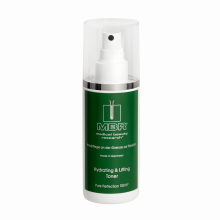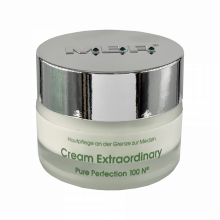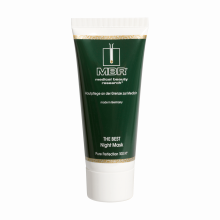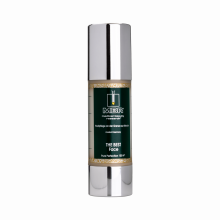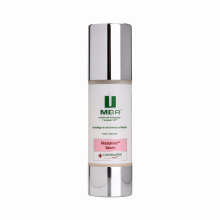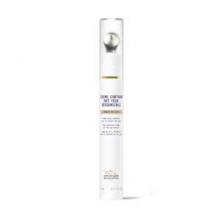What is Skin made of?
Skin is an organ, and it is indeed the largest organ in the body. Skin serves an essential set of functions in the body. It regulates body temperature, maintains water and electrolyte balance, and senses painful and pleasant stimuli. In addition, the skin keeps essential chemicals and nutrients in a while, providing a block against dangerous substances trying to access the body. It also ensures a shield from the harmful effects of ultraviolet radiation emitted by the sun.
The skin comprises three main layers (from the inside out - the subcutaneous tissue, the dermis, and the epidermis).
Subcutaneous Tissue - The Innermost Layer
The deepest layer of the skin is the subcutis. The subcutaneous layer manages the skin's functions of feeding, excreting, and heat exchange. The most important cells are fat cells or adipocytes that serve as a heat insulator for the body, provide energy, and act as a shock absorber to protect underlying tissue against mechanical trauma. It also helps give your skin its resilience. Among mammals, only humans and marine mammals like whales and dolphins have this subcutaneous layer of fat. In addition, sweat glands are found in this layer. The sweat glands are used to excrete waste matter through perspiration. Sweat also controls the body's temperature by evaporating and cooling the skin surface. "Goose-bumps" occur when the fine layer of muscles found in this layer contract.
The Dermis - the Middle layer
The dermis makes up the bulk of the skin, coming in at 90 percent of the skin's thickness. It is a thick, supple, and sturdy layer of connective tissue. The dermis is a dense network of collagen and elastin fibers, two connecting proteins. This network supports tiny lymph and blood vessels that allow the skin to breathe and be nourished and the muscle cells, nerves, sweat and sebaceous glands, and hair follicles. In addition, this layer contains the particular cells that repair the skin, such as the fibroblasts that synthesize the skin proteins: elastin and collagen.
Products stimulating fibroblasts
The sebaceous glands produce special oils for the skin and hair. If the sweat and sebaceous glands function normally, then the skin is healthy. Together these glands provide the "acid mantle," the natural covering that protects the skin. The sebaceous glands in the dermis are found at the base of the individual hair follicles. They produce an oily substance called sebum which waterproofs the hair and lubricates the skin. Overproducing sebaceous glands, a common occurrence in adolescence leads to the formation of blackheads and pimples.
The dermis also houses the sweat glands (which are crucial for keeping the body cool). The apocrine glands of the armpits, the ear canals, the nipples, and around the genitals that secrete chemicals called pheromones are also found in the dermis. Pheromones act as scents that increase interpersonal bonding and sexual attraction. The hair follicles are anchored to the inner portion of the dermis. The dermis is the skin layer that absorbs the bulk of the substances that penetrate the skin.
The Epidermis (of the top layer of Skin)
The thinnest skin layer at a maximum of 1 millimeter or as thin as a pencil line is the epidermis. It is thickest in the palms of the hands and on the soles of the feet. It is the thinnest on the eyelids. The epidermis also produces fingernails, toenails, and hair. The epidermis consists of three types of interwoven cells: the keratinocytes, which produce the protein keratin, the melanocytes, which produce pigment melanin (which determines your skin color and protects you from ultraviolet radiation and); and finally, the Langerhans cells, which are part of the immune system. Their role is to catch foreign substances that try to pass through the skin.
The epidermis comprises four distinct layers, each with an average thickness of 0.25 mm. The top outer layer is called the corneal layer and contains stiff, dead, rugged cells that form the firm surface of the skin. The three lower layers are called the stratum germinativum, the bottom layer is the basal layer, which produces millions of new cells in the epidermis every day. Squamous cells lie just below the firm outer surface of the skin. New cells start as soft, columnar cells that then go through a differentiation process and are turned into the firm, flat cells of the top layers as they are pushed to the surface.
Products speeding up epidermis renewal rate
The keratin proteins and the skin lipids are the most important types of protective substances found in the outer layer of the skin. The outer layer is a composition of 15-20 layers of rugged cells (like the horns of cattle) that are embedded in a matrix of skin lipids. These rugged cells are shed layer by layer and replaced by new cells from below every few days.
The epidermis comprises numerous nerve endings that make the skin a sensory organ that detects light, temperature, touch, and taste. The skin can even show emotion by going pale with fear or blushing with embarrassment.

